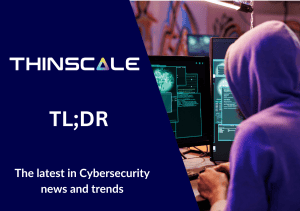With recent events we understand that business continuity is one of the things at the forefront of everyone’s mind, with more organizations closing their office locations temporarily and looking to implement home working as part of an overall business continuity plan. In virtual or remote environments, it’s tempting to think that you just need to provide your employees access through a browser or portal application for use at home and leave it at that, but this is not the case. When providing home working for your employees, security is obviously paramount, but one must also consider scalability, manageability, and of course, the end user experience. While it can be difficult to roll out corporate devices to the entire workforce, if you do decide to allow the use of personal devices then there are steps that can be taken to mitigate risk.
Home working introduces a number of complications to an existing virtual environment, namely around security and manageability. Allowing the use of personal devices for employees working from home can support a business continuity strategy, but transitioning to a remote working workforce from a standard virtualized workforce whilst maintaining the same level of security should be your core focus.
The obvious challenge that employers need to address is the management of risk. Existing compliance policies that were in place on-premises like PCI DSS or GDPR are suddenly called into question when accessing a virtual machine from a non-secure endpoint. With unsecured users accessing resources through a portal, HTML or just a locally installed virtual desktop client, the user could simply copy information from their work environment and store it locally where you have no control over where it goes next.
Visit our main Security and Compliance page and get key information on endpoint security and how our solutions enhance security & compliance on the endpoint.
Secure Remote Worker provides a secure environment from which you can provide access to your virtual environment on personal devices.
- Secure Remote Worker eases and helps the roll out and scaling of existing VDI and remote deployments by:
- Being an easily distributed software solution that can install on any x86/x64 Windows endpoint
- Providing a self-service device validation tool that allows users to check their own endpoints and reports back to the IT team before Secure Remote Worker installs
- Providing central management capabilities through the ThinScale Management Platform, allowing quick profile, policy and software deployment and updates
- Allowing administrators to easily control, refresh, disable and uninstall your Secure Remote Worker clients centrally
- Secure Remote Worker helps ensure endpoint security by:
- Providing a secure workspace that locks end-users out of the underlying Operating System.
- Only allowing the user to run applications they have been given access to
- Preventing data leakage using write filter technology, No information can be carried over from or saved within the secure session
- Helping your remote devices achieve PCI DSS, HIPAA and GDPR compliance
- Dynamically blocking USB mass storage while allowing the use of approved USB devices, further restricting against data leakage but with no loss to device usability.
Secure Remote Worker is available immediately as a free trial. If you would like to learn more please visit our website or knowledge base.



